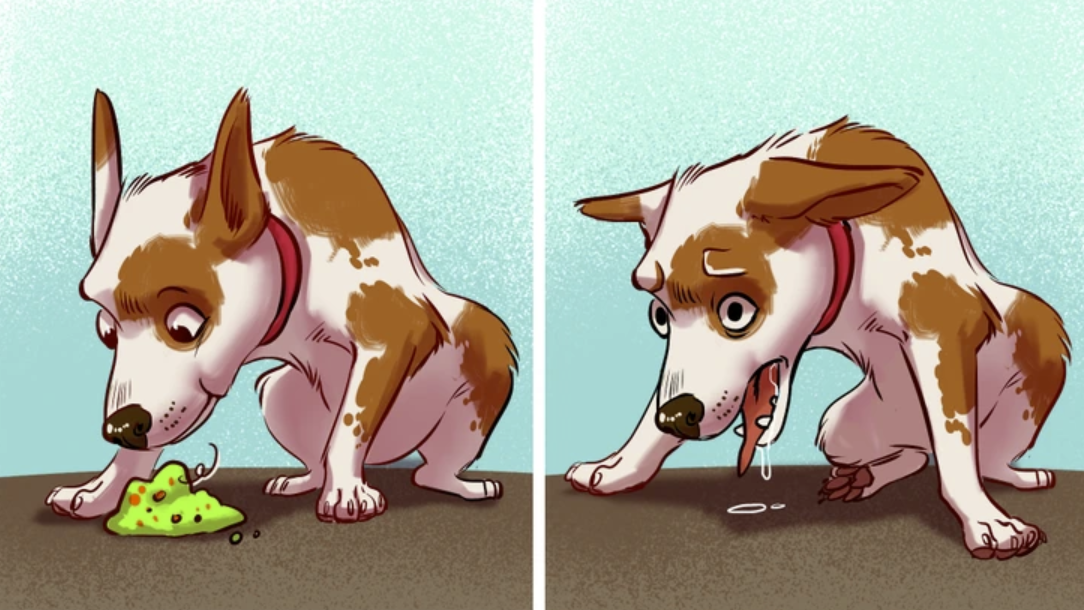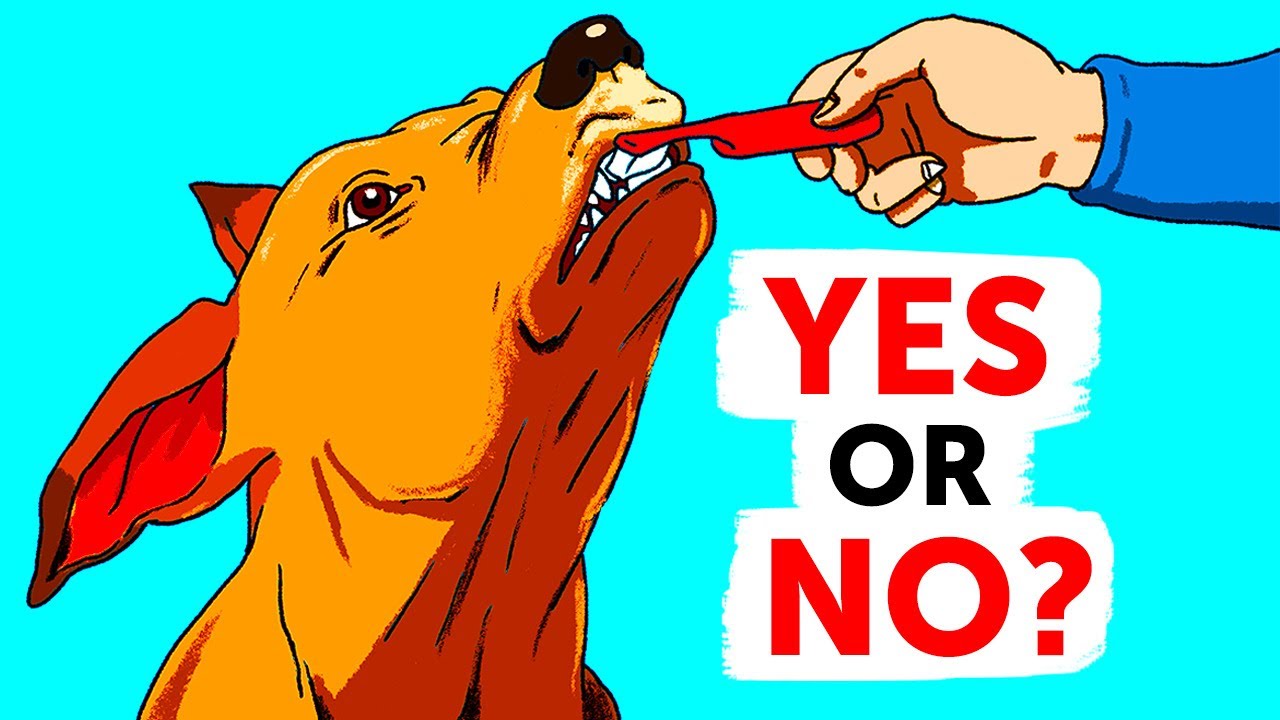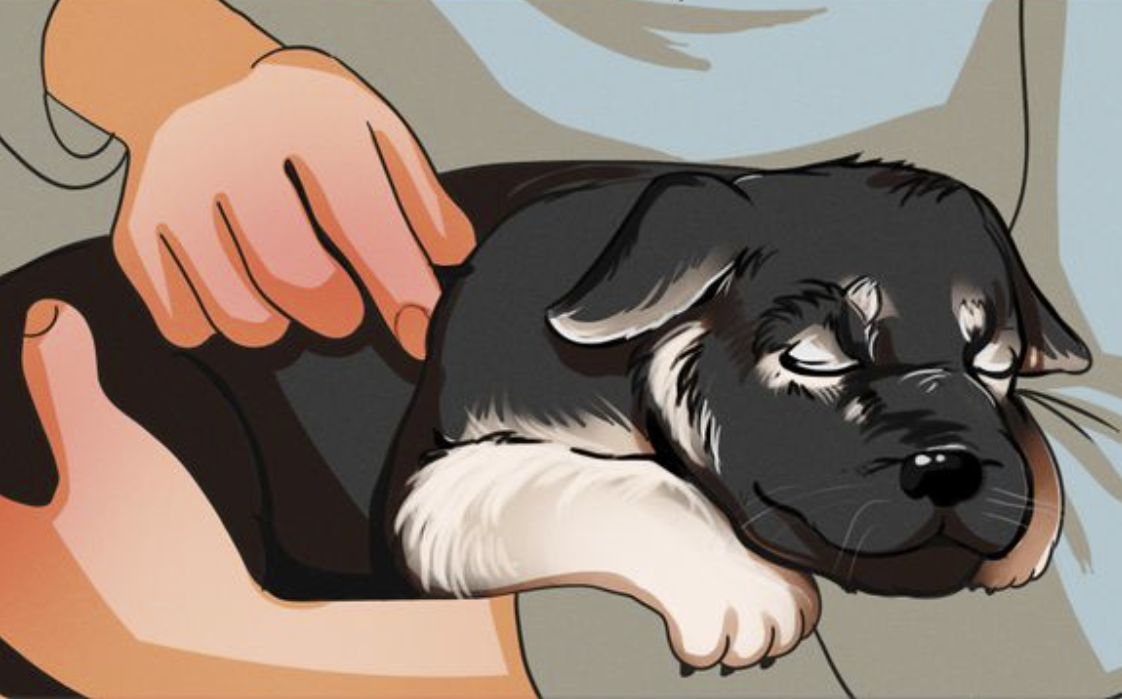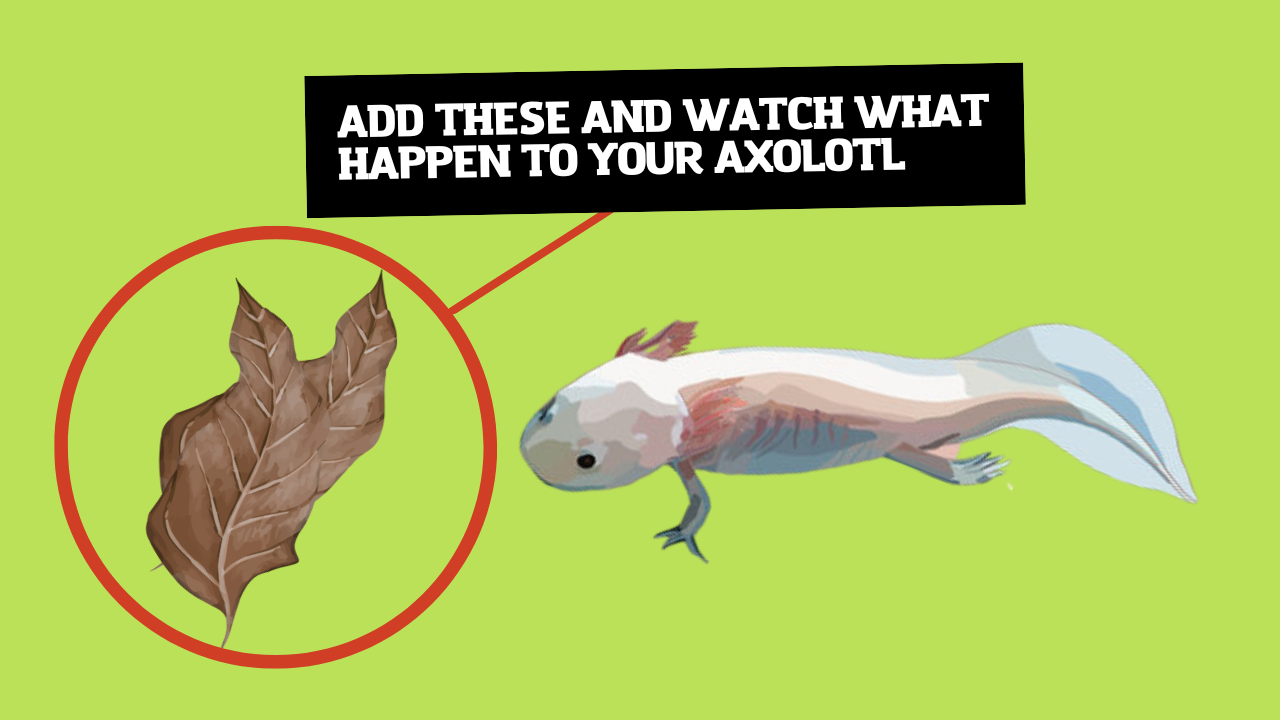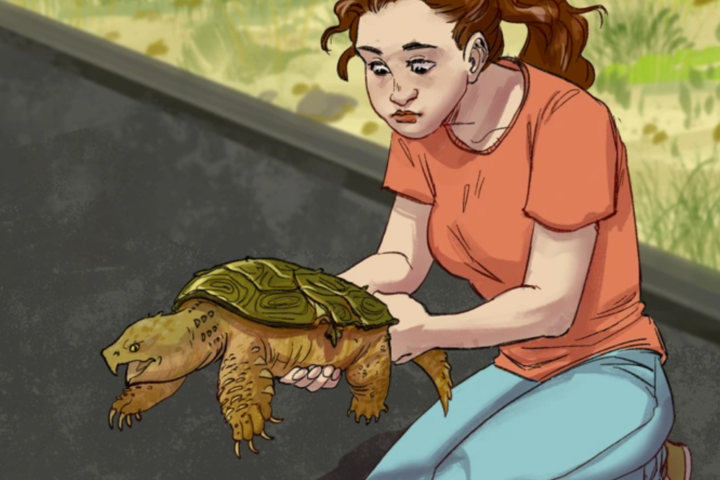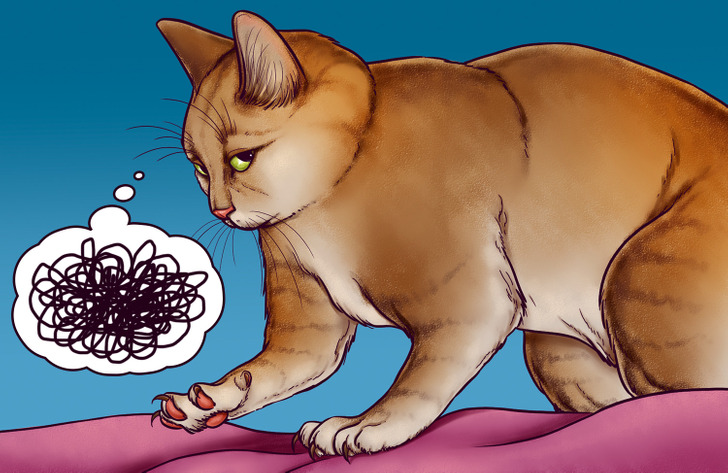How often do you talk to your dog? Do you think you understand when they respond? If you are reading this right now, you’re probably wondering about what dogs are trying to tell us based on their behavior!
Dogs are our best friends. Some of us love and care for them like our own child or sibling. Sharing our lives with them, people are always looking out for dog behavior and what they mean. We know dogs can’t speak, but they can express themselves very well by their body language and sounds they make.
The list of behavior in this article is subjected to a dog’s feelings. The same behavior can mean different things when paired with different feelings. So do take their feelings into account when deciphering their behavior.
1. Bark
Barking is a common occurrence in dogs. They bark to express themselves just like how humans speak. Depending on the bark, they could be:
- expressing excitement
- attracting attention
- give warning
- showing signs of pain
- being territorial
- feeling afraid or anxious
You can figure out what the bark means by the loudness and pitch. As you leave your dog to go to the office, you may notice that it gives off high pitched barks. This occurrence can tell you that your dog may have separation anxiety and doesn’t want to leave your side. When you come home, its barks are at a lower pitch but equally loud as it gets excited to see you!
If they bark multiple times in a row, they are more stimulated compared to barking only once. A dog barking once is a sign of being pissed off or shocked. While a chain of consistent barking means the dog is alarmed or it intends to warn us against something.
2. Yelp
Yelping is an obvious indication that the dog is in distress. Yelps are usually higher pitched and louder than barks. The dog may be expressing pain, fear or sadness. Dogs yelp to get your attention or as a cry of help.
3. Whine
Whining and whimpering can be equivalent to a child crying. Dogs whine and whimper when they feel anxious, annoyed or in pain. Though whining is usually associated with negative emotions, sometimes dogs whine from excitement or when they want to catch our attention. You may find your dog whining when it knows it is time for his walk, which probably means that he wants to go out right now!
4. Howl
If you’ve watched 101 Dalmatians, you would have watched that scene where the parent dalmatians communicated to other dogs by howling! Apart from communicating with other dogs, howling can also express loneliness. Some dogs howl when they are left alone to express their fear, anxiety or discomfort from separation.
5. Growl
Dogs usually growl whenever they feel threatened. They growl to express their dominance towards other animals or people. You should beware if the dog next to you growls as it may lead to aggressive behavior. Pay attention to the type of growl your dog makes because it will later identify what it triggers its growling.
6. Soft Growl
Growling can also mean they are playful. It is a little difficult for us humans to differentiate playful and aggressive growls at first. As you spend more time with your dog, you can slowly get accustomed to the subtle difference between the two types of growling. So when your dog growls during play, don’t be too alarmed as they are probably having a ton of fun!
7. Panting
Just like humans, dogs pant when it feels hot or after an exercise. It is the equivalent of sweating in humans. Sometimes they pant when they get excited too! Panting helps them to relieve themselves from heat or the excess energy they have. However if you notice heavy panting for an extended amount of time, it is best to bring it to the vet as it may have an underlying health problem.
8. Neutral Tail Position
A dog’s tail in a neutral state usually hangs down behind it in a relaxed manner. Tail movement is a big indicator when it comes to reading a dog’s body language. When its tail is in its neutral state, it feels calm and relaxed.
9. Tail Wagging
A dog wags its tail when it is happy or excited. If you look closely, you will see that here is a slight difference in their tail wag for different occasions.
- If the tail wag is slow and at its neutral position, it is ready to play or is alert.
- If the tail wag is fast, it is playful and excited.
10. Tail Down
When a dog’s tail is below its neutral position, it shows that it feels uncomfortable. On top of that if it is tucked in between its legs, then it is afraid and it feels threatened.
11. Tail Straight Up
When the tail is in a straight up position, the dog is alert. If there are other dogs around it, it is trying to show dominance. In addition to that, if this tail position is paired with teeth bared then we should be careful around it.
12. Relaxed Or Stiff Body Posture
You can tell how a dog feels by looking at different body parts. Their ears and tails are dead giveaways but their dog’s posture can tell you a lot about how it feels too. When it is relaxed, it feels comfortable around you or in its environment. When you see that the dog’s body is stiff, it is uncomfortable or uneasy. Its facial expression is also an obvious evidence of a dog’s feelings.
13. Downward Dog
If you are a fan of yoga, you would have definitely done a pose called downward dog. Exactly as the yoga pose, downward dog is when a dog bends down and sticks its rear up. Sometimes this body posture is also known as bowing. When a dog does this, it is trying to show that it wants to play! This is sometimes accompanied by its wagging tail or a playful bark.
14. Shake head
Without hands and fingers to clear things off their faces, dogs shake their heads to relieve themselves instead. They shake their heads to ease any discomfort or itchiness. They also do it to remove water or dirt on their heads.
At times, they shake their head because they have something in their ears. There is no harm in checking their ears if you see them shaking their head more often than usual. Ear discomfort may be caused by allergies or infection which is best to get it checked by the vet.
15. Licking You
If your dog licks you, it either loves you or loves how you taste. Licking is one of the more obvious ways a dog can show its affection. Mother dogs lick their puppies to clean and groom them. Sometimes you’ll notice that your dog licks you when you feel sad. They do it to show their empathy towards your emotional state. Aren’t they the best?
16. Excessive Licking
Dogs look adorable when they lick their paws but any excessive licking is something dog owners should pay attention to. They may be feeling anxious, stressed or even bored. Excessive licking in one spot can also be due to a small wound or a skin condition which should definitely be checked out.
17. Sniffing
If you’ve never seen your dog sniffing the air around it, watch your dog when you walk past it with a chunk of freshly baked meat! Smell is a dog’s main sensor. A dog can recognise and identify things around it with its sense of smell. When you take your dog out for a walk, it sniffs around to find familiar scents.
18. Sniffing Another Dog’s Butt
You will also notice that it will smell another dog’s butt. This is really natural as they greet each other and identify the dog they meet. A dog’s heightened sense of smell can detect the gender, temperament and reproductive health from a whiff of another dog’s butt.
19. Tilt Head
Dogs tilt their heads like how humans nod along in the conversation. It is an indication that the dog is stimulated by the things they hear. By tilting their heads, they can concentrate on sounds they want to hear more clearly as their ear flaps get lifted to the side. In some dogs, they know that tilting their heads will stimulate humans for more interaction. Hence they do it to prolong the continuation of the interaction.
20. Show Teeth
There are a couple of different scenarios where a dog bares its teeth, depending on its body posture. If its body looks relaxed, it may be showing submission or just plain smiling. However, if a dog bares its teeth, growls and has an aggressive body posture then you’ll need to be careful. It feels threatened, ready to attack.
21. Yawn
Contrary to human behavior, dogs do not only yawn because they are sleepy. Yawning could mean they feel anxious. Stretching the jaw muscles and inhaling a big breath of air helps to calm them down.
Yawning is also a sign of indifference. Upon meeting an aggressive dog, a dog could yawn to show that he is not interested in conflict. It is trying to express that it decides to be passive but not submissive.
22. Nose Licking
Nose licking is a natural sign that a dog is healthy. They lick their noses to cool off or to sharpen their sense of smell. However, excessive licking could mean they feel anxious or are feeling unwell.
23. Licking Private Parts
This behavior can be quite embarrassing but it is pretty common for dogs to lick their private parts. They occasionally do it to groom themselves. Licking their private parts will help clean it but if it is excessive then it may be an underlying problem. Excessive licking may be caused by itchiness or discomfort.
24. Take Its Food To Eat Elsewhere
Have you ever noticed your dog picking up its food from the pretty and expensive bowl you bought it just to drop it on the floor next to the dining table to eat it? It is quite strange to us humans but your dog is just trying to protect his food before eating it!
25. Flops Upwards To Expose Belly
When your pup flops upwards and exposes its belly, it trusts you and wants some attention.
A dog’s belly region is very vulnerable, so a dog will only expose its belly to you if it trusts you. It feels secure, confident and relaxed in its surroundings. Like it or not, now you’re obligated to give it some love and warm belly rubs!
26. Ears Move Forward
A dog will stiffen or bring its ears forward to pay attention. It shows that it is engaged and is actively listening.
27. Ears Backwards And Hanging Low
If a dog’s ears are shifted backwards and hanging low, it means they are afraid. This behavior shows timidness and submission.
28. Staring
Your furry friend loves watching you as much as you like watching it. It wants to know what you do, who you’re with and especially what you’re eating! Staring is very normal if your dog is very comfortable with you.
29. Avoid Eye Contact
Many generations ago, the ancestors of dogs were domesticated wolves. It is considered rude or threatening to stare. Sometimes, this behavior resurfaces in the dogs around us now. Beware if a dog’s body posture is stiff and alert while staring hard at you. It may get aggressive if it feels threatened by you.
30. Humping
Humping can be an embarrassing behavior especially when your dog humps your guest. It can be a factor of sexual attraction or hormones. Humping for dogs is equivalent to masturbation and can be seen in both male and females. A neutered or spayed dog may still have humping habits if they developed it before the procedure.
For some cases, a dog humps when it gets over excited. Humping helps them relieve stress and burn off excess energy. After all, it is a form of exercise and mental stimulation.
31. Zoomies
“Zoomies” is a term to describe a dog suddenly energetically sprinting. It is a delight to watch them run like that because it is quite funny. If you see a dog doing “zoomies” it means they are happy! They are running to release the pent up energy from being happy and excited! So if you see your dog doing this, you can rest assured that you are doing a good job at keeping it happy.
32. Pee
Male and female dogs mark their surroundings by peeing. If you take your dog for a walk, you’ll notice that it has the tendency to sniff and stop by multiple locations to urinate. It tries to mark its territory and to show ownership of the area.
When dogs mark territories, they usually dispense smaller amounts of urine frequently. Marking is common in dogs that are not spayed or neutered.
33. Twitch And Jerk In Their Sleep
To have twitching and jerking in a dog’s sleep is a natural thing. These movements are involuntary muscle movements that happen suddenly anywhere in a dog’s body. They are probably actively dreaming in their sleep. These spasms could look scary to us but if you wake them up, they’ll be quite puzzled.
If your dog twitches when they are awake, it is not a good sign. They may have health conditions that you should be aware of. Twitching could also be due to poisoning if a dog ingested chocolate or any cleaning chemicals. For this case, you definitely need to bring it to the vet as soon as possible.
34. Scooting
Scooting is when a dog drags its butt on the floor in a seated posture. It can be quite a sight and you’ll be very puzzled when you see this for the first time. Dogs have this behavior because they have problems with their anal glands so they are trying to relieve the soreness by doing so.
If you see them scooting, lift their tail up to check their anus. If you see anything out of the ordinary and are unsure, it is best to bring them to a vet. A vet can help them to clear the anal glands after a physical examination.
35. Kick Up Dirt
From face value, it may look like your dog is trying to ruin the lawn you carefully curated. Dogs kick up dirt to mark their territory. There is a unique scent in each dog’s paws and when they kick dirt, the scent gets transmitted to the ground. Your dog is trying to tell other dogs that this land is his.
If this behavior is occasional, it may be due to itchy paws. You can help ease the itch with balm or cream.
36. Biting
Biting is triggered when a dog feels scared, threatened or frustrated. There is a fine line between play bite and a real bite. A dog owner can gauge the mood of the dog as they play. It is difficult to control playful bites so it’s best to teach it to bite gently or to not let them bite you at all.
It is common for dogs to want to bite things. This behavior is destructive if the owner did not instruct it to bite. If a dog bites a human, there is a risk of getting an infection. As a dog owner, you obviously don’t want your guests to leave your house with Cellulitis!
37. Nibbling And Chewing
Puppies have a habit of chewing things as they go through their teething phase. As an owner, you should provide the right toys for it to chew on. You may find some furniture with bite marks if you don’t keep an eye on them. They investigate things around them by nibbling. Puppies like to chew on their owner’s hands and fingers. It is adorable when they are at that stage but as they grow to become adults, you shouldn’t encourage this behavior.
Adult dogs nibble and chew too. They nibble on their paws or legs if they feel an itch. Owners should not deprive them of chew toys. However, if they chew on other things that aren’t meant to be chewed on, you should enforce a stop to the chewing.
38. Eating Grass
Dogs sometimes eat grass because they feel unwell. As grass has high fiber content, it helps to clear out any parasites or foreign objects in their digestive system. If you see your dog eating grass, you don’t have to be alarmed, but don’t let them eat too much! Eating too much grass can cause them to have a bulk of grass in their stomach that needs to be removed with surgery.
39. Scratch Their Bed
This interesting behavior can be traced back to their ancestors in the wild. Wild dogs did not have the comfort of having consistent beds. They had to make their own resting spot in different places when night came. The scratching behavior is to prime the location they want to sleep on and to remove any vegetation or pebbles that may lead to discomfort. Though it isn’t relevant to their domesticated lives now, dogs still find security and comfort when they scratch their beds. This behavior is common before they decide to lay down for a nap or for a night’s slumber.
40. Eat Feces
While it seems disgusting to us, dogs actually eat their poop sometimes. Some dogs do it because they watched their mothers or other dogs do it. Sometimes, it may be curious about the poop and eat it to see how it tastes. We will not understand this but they may even like the smell of their own poop!
Eating their own feces may also be a sign of nutrition deficiency. Diversify your dog’s diet to give it more variety in nutrition.
Final Word
Caring for the wellbeing of a dog is not only a physical matter. Dogs are emotional creatures. They can sense and feel emotions strongly. Canines are pack animals, they are instinctively programmed to live and communicate with others.
A dog is usually very transparent with its intentions. You will not meet a dog that tries to lie to you through their body language. Having a good understanding of their behavior will bring you closer to communicating and living in harmony with your fur baby.
There are many behaviors that are genetically passed down from their ancestors. These are usually hard to stop but with lots of love and patience, you can train them to correct these behaviors.

